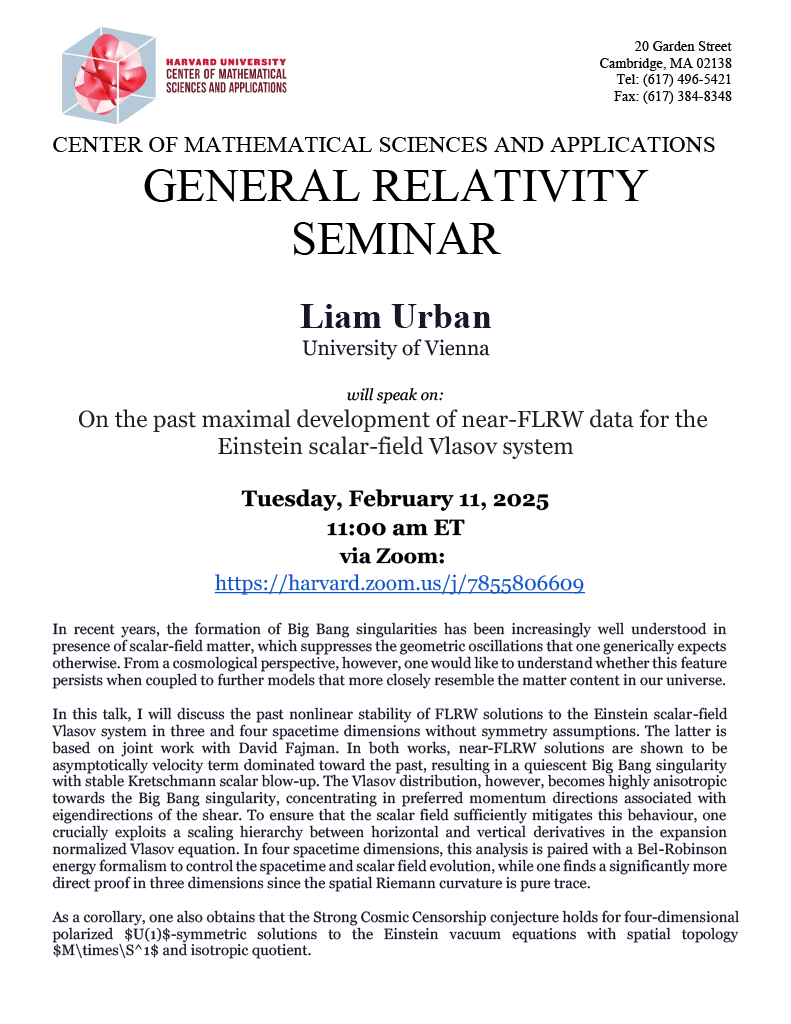
- This event has passed.
On the past maximal development of near-FLRW data for the Einstein scalar-field Vlasov system

General Relativity Seminar
Speaker: Liam Urban (University of Vienna)
Title: On the past maximal development of near-FLRW data for the Einstein scalar-field Vlasov system
Abstract: In recent years, the formation of Big Bang singularities has been increasingly well understood in presence of scalar-field matter, which suppresses the geometric oscillations that one generically expects otherwise. From a cosmological perspective, however, one would like to understand whether this feature persists when coupled to further models that more closely resemble the matter content in our universe.
In this talk, I will discuss the past nonlinear stability of FLRW solutions to the Einstein scalar-field Vlasov system in three and four spacetime dimensions without symmetry assumptions. The latter is based on joint work with David Fajman. In both works, near-FLRW solutions are
shown to be asymptotically velocity term dominated toward the past, resulting in a quiescent Big Bang singularity with stable Kretschmann scalar blow-up. The Vlasov distribution, however, becomes highly anisotropic towards the Big Bang singularity, concentrating in preferred momentum directions associated with eigendirections of the shear. To ensure that the scalar field sufficiently mitigates this behaviour, one crucially exploits a scaling hierarchy between horizontal and vertical derivatives in the expansion normalized Vlasov equation. In four
spacetime dimensions, this analysis is paired with a Bel-Robinson energy formalism to control the spacetime and scalar field evolution, while one finds a significantly more direct proof in three dimensions since the spatial Riemann curvature is pure trace.
As a corollary, one also obtains that the Strong Cosmic Censorship conjecture holds for four-dimensional polarized $U(1)$-symmetric solutions to the Einstein vacuum equations with spatial topology $M\times\S^1$ and isotropic quotient.
